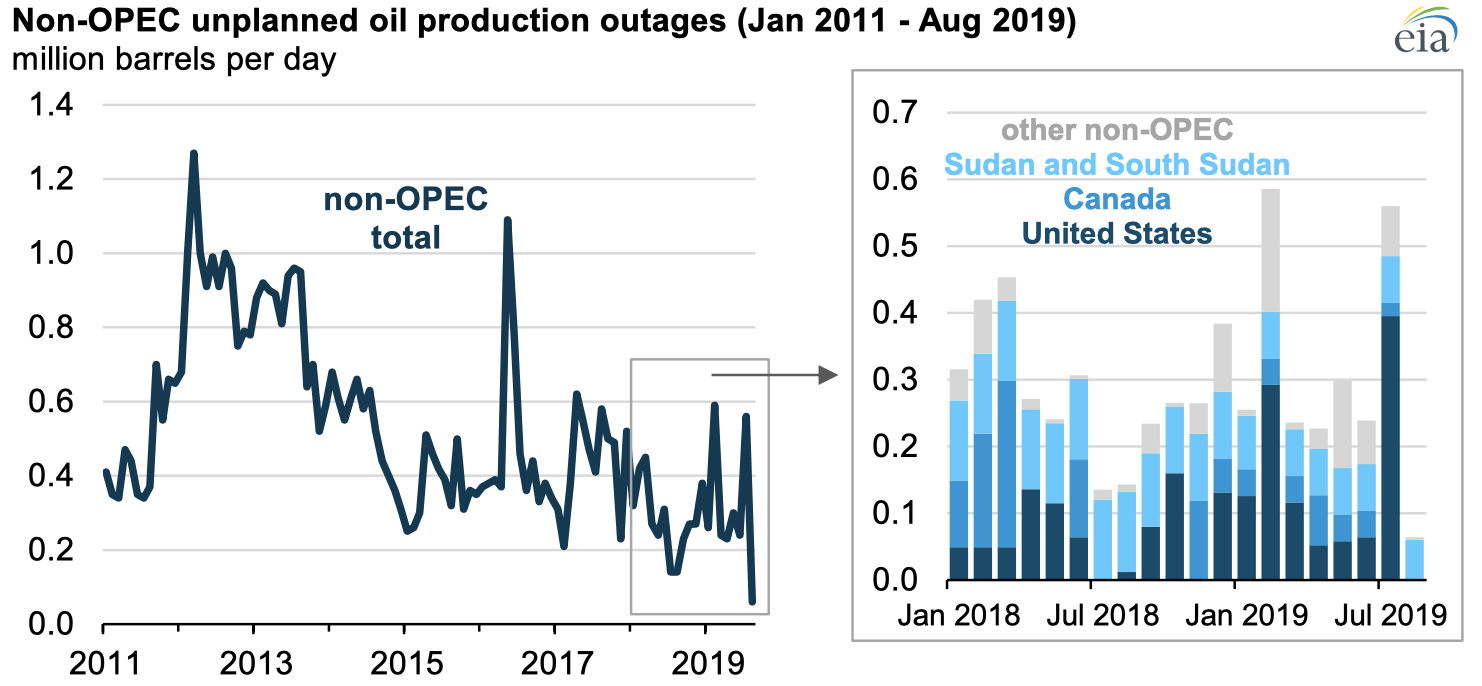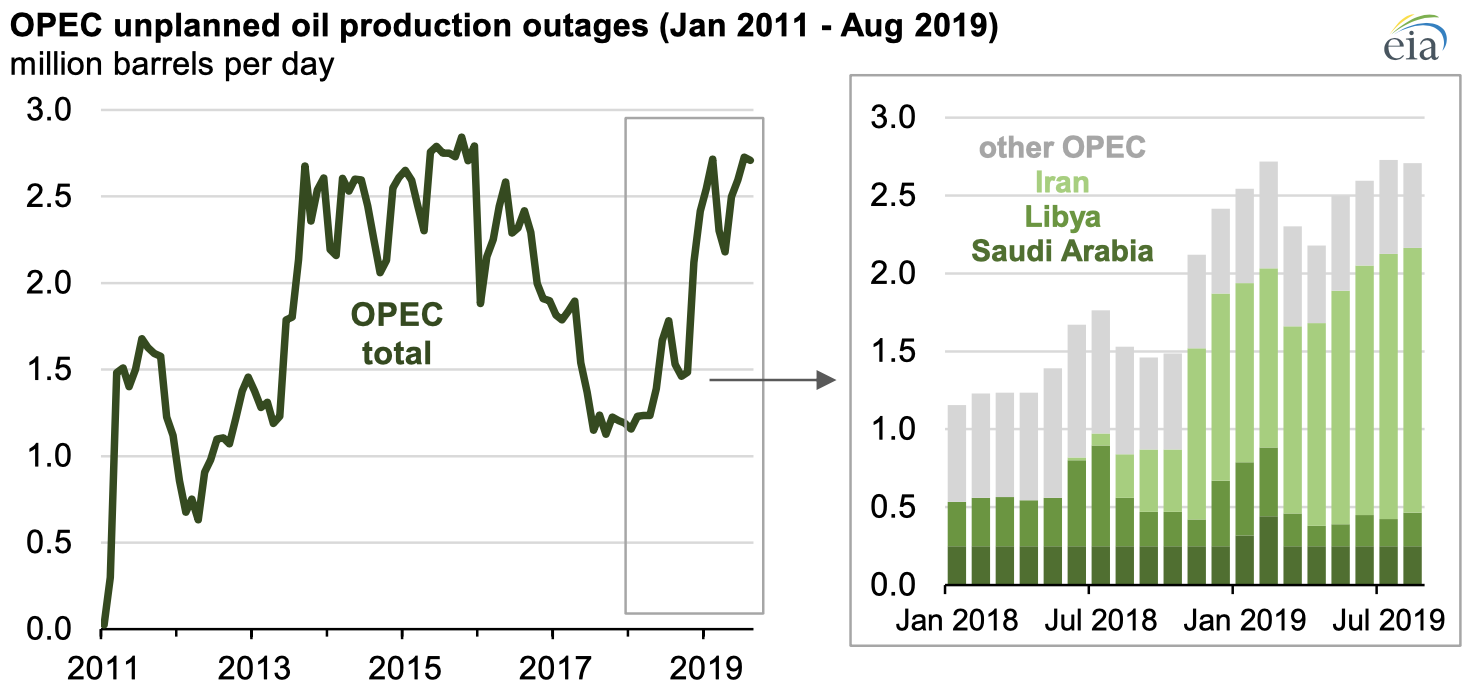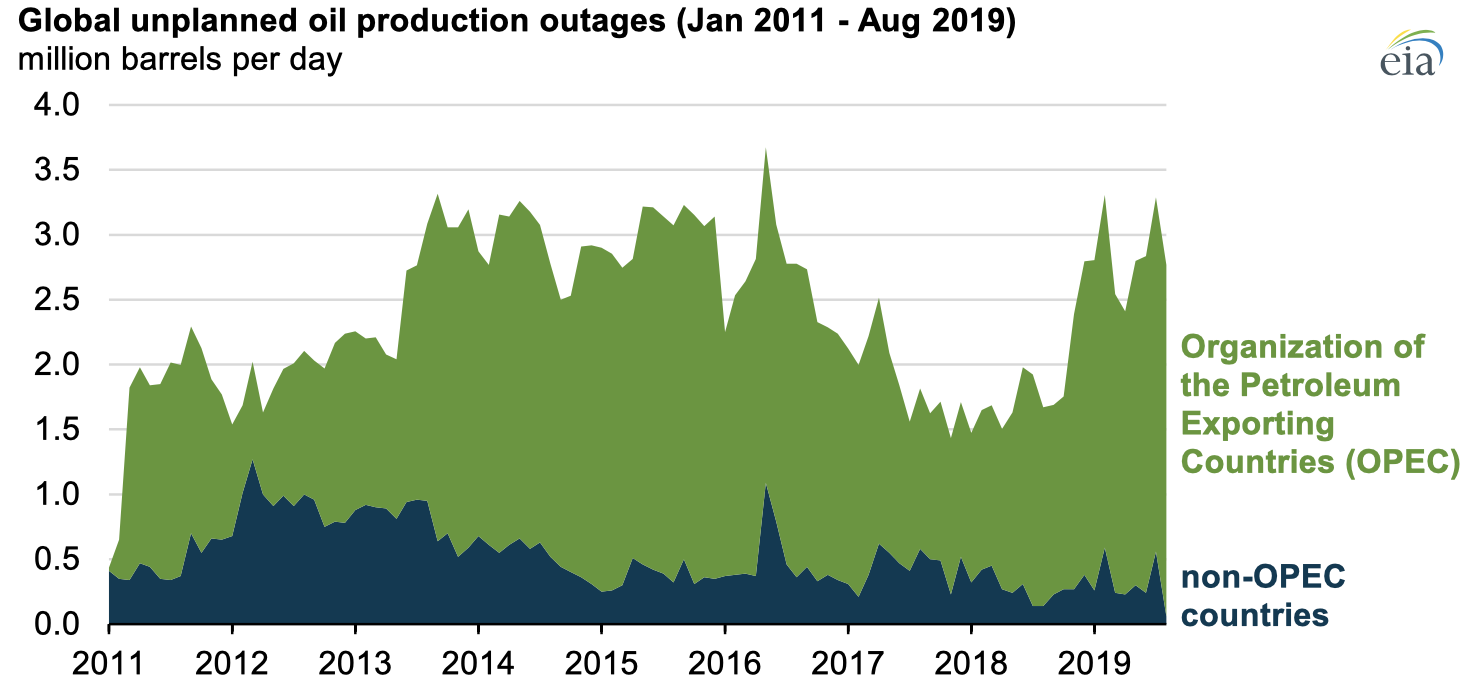Unplanned oil production outages among countries outside the Organization of the Petroleum Exporting Countries (OPEC) fell to 64,000 barrels per day (b/d) in August, the lowest level since the U.S. Energy Information Administration (EIA) began tracking global production outages in 2011. Unplanned outages in major non-OPEC oil producers such as the United States, Russia, and Canada have abated, leaving Sudan and South Sudan as the only remaining non-OPEC producers with unplanned outages in August. The decline in non-OPEC unplanned outages may have contributed to the resilience of the global oil market following the disruption of almost 5.7 million b/d of Saudi Arabian crude oil production on September 14, 2019.

EIA tracks both OPEC and non-OPEC production outages. In its estimates of outages, EIA differentiates among declines in production resulting from unplanned production outages, permanent losses of production capacity, and voluntary production cutbacks. EIA’s estimates of unplanned production outages are calculated as the difference between estimated effective production capacity (the level of supply that could be available within one year) and estimated production. EIA publishes historical unplanned production outage estimates in EIA’s Short-Term Energy Outlook (STEO).
South Sudan declared independence from Sudan in July 2011, but it remained dependent on Sudan to export its oil through Sudan's pipelines. In 2012, South Sudan shut in its oil production, mainly because of a dispute with Sudan over oil transportation fees via the pipelines. The countries resolved the dispute, and South Sudan restarted oil production in 2013, but armed conflict persists in both countries as unresolved issues on domestic and interstate relations linger. South Sudan has revived some of its production in 2019, lowering its total disrupted volumes.
Other than in Sudan and South Sudan, the largest outages in the past year in non-OPEC member countries were the result of unplanned maintenance and weather events. In Russia, flows on the Druzhba pipeline—which supplies Russian Urals crude oil to Europe—were suspended at the end of April 2019 because contaminated crude oil entered the pipeline, disrupting about 100,000 b/d in production. These disrupted volumes were fully restored by July 2019.
U.S. crude oil production has been disrupted this year because of unplanned maintenance and hurricanes. U.S. unplanned disruptions peaked in July at nearly 400,000 b/d when Hurricane Barry caused the precautionary evacuation of platforms and oil rigs in the Gulf of Mexico. This disruption was quickly alleviated. By contrast, Hurricane Dorian, which did not track across the Gulf of Mexico, did not affect U.S. crude oil production.

Unplanned production outages among OPEC members (which includes Saudi Arabia), however, have remained relatively high. In August, OPEC unplanned crude oil production outages were about 2.7 million b/d, with Iran accounting for 2.1 million b/d of the total. OPEC liquids production in August totaled 35 million b/d, or about 35% of total global production, compared with non-OPEC production of 66 million b/d. The next edition of EIA’s Short-Term Energy Outlook, to be published on October 8, will include updated estimates of OPEC and non-OPEC unplanned production outages.

Principal contributors: Emily Sandys, Eric Han










